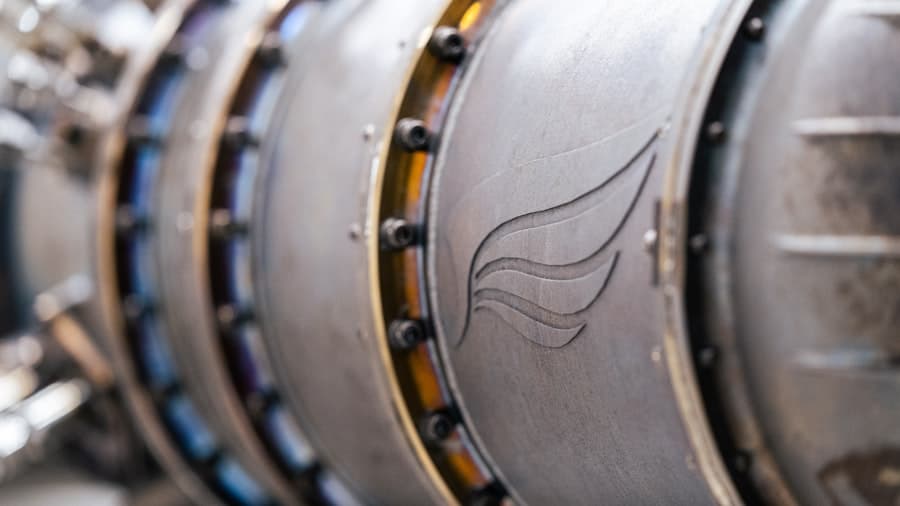Aerospace engineering is a multifaceted discipline that encompasses the design, development, testing, and production of aircraft and spacecraft. This field integrates various engineering principles, including mechanical, electrical, materials, and systems engineering, to create vehicles capable of operating in the Earth’s atmosphere and beyond. The significance of aerospace engineering extends beyond mere transportation; it plays a crucial role in national defense, commercial aviation, and space exploration.
As the world becomes increasingly interconnected, the demand for advanced aerospace technologies continues to grow, making this field more relevant than ever. The scope of aerospace engineering is vast, covering everything from the aerodynamic properties of an aircraft to the propulsion systems that power rockets. Engineers in this field must possess a deep understanding of fluid dynamics, structural analysis, and control systems, among other areas.
The challenges faced by aerospace engineers are complex and require innovative solutions to ensure safety, efficiency, and sustainability. As we delve into the history, current technologies, future trends, and societal impacts of aerospace engineering, it becomes evident that this discipline is at the forefront of technological advancement and human exploration.
Key Takeaways
- Aerospace engineering involves the design and development of aircraft, spacecraft, and related systems.
- The history of aerospace engineering dates back to the early 20th century with the development of airplanes and later expanded to include space exploration.
- Current technologies in aerospace engineering include advanced materials, propulsion systems, and avionics for improved performance and safety.
- Future trends in aerospace engineering are focused on sustainable aviation, hypersonic travel, and the exploration of Mars and beyond.
- Advancements in aircraft design are driven by factors such as fuel efficiency, noise reduction, and passenger comfort, leading to innovative concepts like blended wing bodies and electric propulsion systems.
History of Aerospace Engineering
The roots of aerospace engineering can be traced back to the early 20th century when pioneers like the Wright brothers made significant strides in powered flight. In 1903, Orville and Wilbur Wright achieved the first controlled, sustained flight of a heavier-than-air aircraft with their Wright Flyer. This monumental event marked the beginning of a new era in transportation and set the stage for rapid advancements in aviation technology.
Following this breakthrough, the field evolved rapidly during World War I, as military needs spurred innovations in aircraft design and performance. The interwar period saw the emergence of commercial aviation, with companies like Boeing and Douglas leading the charge in developing passenger aircraft. The introduction of metal airframes and more powerful engines revolutionized air travel, making it faster and more reliable.
By World War II, aerospace engineering had matured into a distinct discipline, with significant contributions from figures such as Amelia Earhart and Howard Hughes. The post-war era witnessed the birth of jet propulsion technology, which transformed commercial aviation and laid the groundwork for modern air travel.
Current Technologies in Aerospace Engineering

Today’s aerospace engineering landscape is characterized by cutting-edge technologies that enhance performance, safety, and efficiency. One of the most significant advancements is the development of composite materials, which offer superior strength-to-weight ratios compared to traditional metals. These materials are increasingly used in aircraft structures to reduce weight and improve fuel efficiency.
For instance, the Boeing 787 Dreamliner utilizes carbon-fiber-reinforced polymer extensively in its construction, resulting in a lighter aircraft that consumes less fuel. Another critical area of innovation is avionics—the electronic systems used for communication, navigation, and monitoring within an aircraft. Modern avionics systems incorporate advanced technologies such as GPS, radar, and automated flight control systems that enhance situational awareness for pilots and improve overall safety.
The integration of artificial intelligence (AI) into avionics is also gaining traction, enabling predictive maintenance and real-time decision-making during flight operations. These advancements not only improve operational efficiency but also contribute to reducing human error in aviation.
Future Trends in Aerospace Engineering
| Topic | Metrics |
|---|---|
| Advanced Materials | Development of lightweight, high-strength materials |
| Electric Propulsion | Efficiency and power output of electric propulsion systems |
| Autonomous Systems | Integration of autonomous systems for unmanned aerial vehicles |
| Space Exploration | Advancements in space exploration technologies and missions |
| Aircraft Design | Improvements in aerodynamics and fuel efficiency |
As we look to the future, several trends are poised to shape the trajectory of aerospace engineering. One prominent trend is the increasing focus on sustainability within the industry. With growing concerns about climate change and environmental impact, aerospace engineers are exploring alternative fuels and electric propulsion systems.
Companies like Airbus are actively researching hydrogen-powered aircraft as a means to reduce carbon emissions significantly. The development of sustainable aviation fuels (SAFs) derived from renewable sources is also gaining momentum, with several airlines already testing these fuels in commercial flights. Another trend is the rise of urban air mobility (UAM), which envisions a future where electric vertical takeoff and landing (eVTOL) aircraft provide on-demand transportation within urban environments.
Companies such as Joby Aviation and Volocopter are at the forefront of this movement, developing prototypes that aim to alleviate traffic congestion and provide efficient transportation solutions. The integration of UAM into existing air traffic management systems presents unique challenges but also offers exciting opportunities for innovation in aerospace engineering.
Advancements in Aircraft Design
The design of modern aircraft has evolved dramatically over the years, driven by advancements in technology and changing consumer demands. One notable trend is the shift towards more aerodynamic shapes that minimize drag and enhance fuel efficiency. Computational fluid dynamics (CFD) simulations allow engineers to analyze airflow around aircraft designs before physical prototypes are built.
This capability has led to more efficient wing designs and fuselage shapes that optimize performance. Additionally, advancements in 3D printing technology are revolutionizing aircraft manufacturing processes. This additive manufacturing technique allows for the production of complex components with reduced waste and shorter lead times.
For example, GE Aviation has successfully 3D printed fuel nozzles for jet engines, resulting in lighter parts that perform better under extreme conditions. As 3D printing continues to mature, it is expected to play an increasingly significant role in producing customized components for both commercial and military aircraft.
Innovations in Space Exploration

The realm of space exploration has witnessed remarkable innovations driven by advancements in aerospace engineering. The development of reusable rocket technology has transformed how we approach space travel. SpaceX’s Falcon 9 rocket is a prime example; its ability to land vertically after delivering payloads to orbit has drastically reduced launch costs and increased access to space.
This innovation has opened up new possibilities for satellite deployment, scientific research, and even crewed missions to Mars. Moreover, advancements in propulsion systems are enabling deeper space exploration than ever before. NASA’s Perseverance rover, which landed on Mars in February 2021, utilizes cutting-edge technologies such as autonomous navigation and advanced scientific instruments to conduct experiments on the Martian surface.
The ongoing Artemis program aims to return humans to the Moon by 2024 and establish a sustainable presence there as a stepping stone for future missions to Mars. These ambitious projects highlight how aerospace engineering continues to push the boundaries of human exploration beyond our planet.
Impact of Aerospace Engineering on Society
The influence of aerospace engineering extends far beyond the confines of laboratories and manufacturing facilities; it profoundly impacts society as a whole. The development of commercial aviation has transformed global connectivity, enabling people to travel across continents in mere hours. This accessibility has facilitated international trade, tourism, and cultural exchange, contributing significantly to economic growth worldwide.
Furthermore, aerospace engineering plays a vital role in national security through military aviation capabilities. Advanced fighter jets and unmanned aerial vehicles (UAVs) have revolutionized modern warfare by providing enhanced surveillance and precision strike capabilities. The technological advancements derived from military applications often find their way into civilian use as well; for instance, drone technology has been adapted for various purposes such as agriculture, disaster response, and infrastructure inspection.
Challenges and Opportunities in Aerospace Engineering
Despite its many advancements, aerospace engineering faces several challenges that require innovative solutions. One pressing issue is the need for enhanced safety measures in an increasingly crowded airspace. As air traffic continues to grow globally, ensuring safe operations while minimizing delays becomes paramount.
The integration of advanced air traffic management systems that utilize AI and machine learning can help optimize flight paths and reduce congestion. Additionally, the industry must address workforce shortages as experienced engineers retire and demand for skilled professionals increases. Educational institutions are responding by developing specialized programs that focus on aerospace engineering principles while also emphasizing interdisciplinary skills such as data analysis and software development.
Collaborations between academia and industry can create pathways for students to gain practical experience through internships and research projects. In conclusion, aerospace engineering stands at a pivotal moment in its evolution—balancing historical achievements with future aspirations while navigating challenges that require innovative thinking and collaboration across disciplines. As we continue to explore new frontiers in aviation and space exploration, the contributions of aerospace engineers will undoubtedly shape our world for generations to come.


